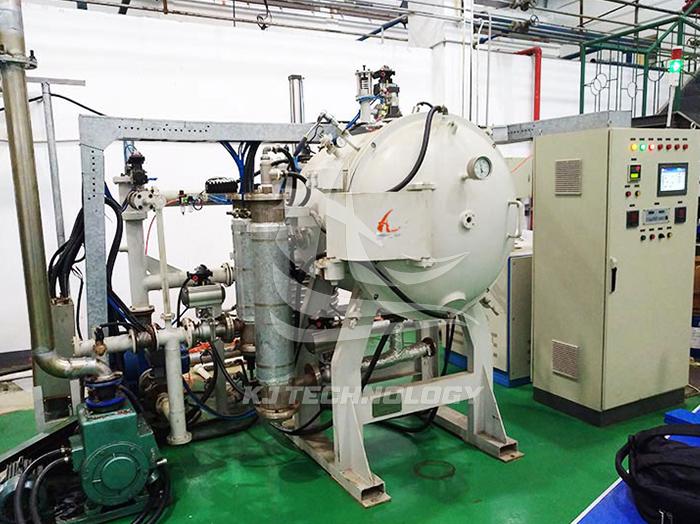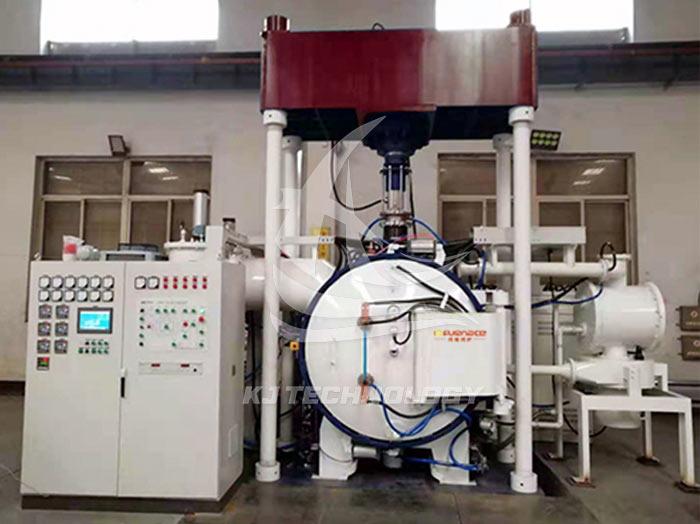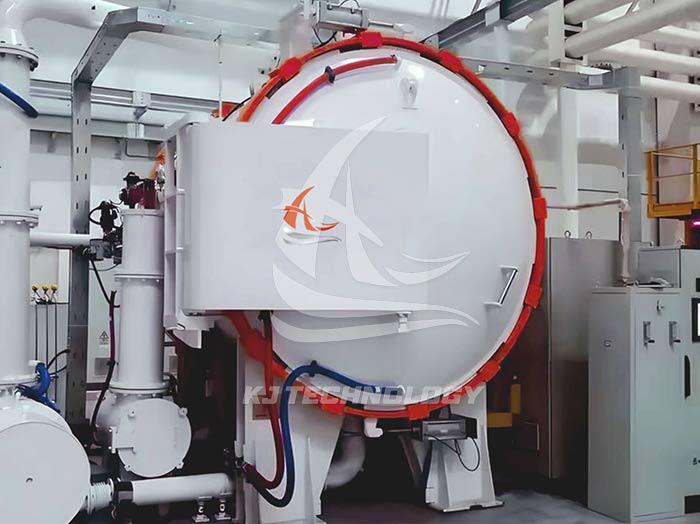Application fields of high vacuum hot pressing furnace
 06-24-2025 Author: KJ technology
06-24-2025 Author: KJ technology
The high vacuum hot press furnace plays an irreplaceable role in advanced material research and high-end manufacturing due to its comprehensive advantages of high temperature, high pressure, high vacuum, and precise control. The following is a detailed analysis of its core application areas:
1. Aerospace and Defense Industries
Preparation of High Temperature Structural Materials
Application: Densification sintering of silicon carbide (SiC) ceramic matrix composites (CMCs), silicon nitride (Si ∝ N ₄) bearings, and turbine blades.
Advantages: High vacuum environment avoids oxidation, high pressure promotes strong bonding between grains, improves material high temperature resistance (>1600 ℃) and creep resistance, and meets the extreme working conditions of aircraft engines.
Synthesis of Intermetallic Compounds
Application: Diffusion welding and hot pressing of titanium aluminum (TiAl) alloy and nickel aluminum (NiAl) alloy.
Advantages: The synergistic effect of ultra-high temperature (>1200 ℃) and high pressure enables atomic level diffusion, enhances interface bonding strength, and is suitable for lightweight high-strength structural components.
2. Semiconductors and Electronic Information
Preparation of third-generation semiconductor materials
Application: Hot pressing sintering and wafer bonding of silicon carbide (SiC) and gallium nitride (GaN) single crystal substrates.
Advantages: High vacuum environment reduces impurity pollution, high voltage promotes grain orientation and alignment, improves crystal quality (dislocation density<10 ³ cm ⁻ ²), and meets the needs of 5G communication and power electronic devices.
Ceramic packaging materials
Application: Hot pressing molding of alumina (Al ₂ O3) and aluminum nitride (AlN) ceramic substrates.
Advantages: High density (>99%) and low coefficient of thermal expansion (CTE), improving packaging reliability, suitable for high-power LEDs and microwave devices.
3. New energy and energy storage
Preparation of Solid State Battery Electrolyte
Application: Hot pressing sintering of garnet type (LLZO) and sulfide based solid electrolytes.
Advantages: High pressure promotes the formation of ion conducting phases, high vacuum avoids lithium loss, improves ion conductivity (>10 ⁻ ³ S/cm) and interface stability.
Research and development of hydrogen energy materials
Application: Hot pressing of bipolar plates (graphite/metal composite) for proton exchange membrane fuel cells (PEMFC).
Advantages: Achieve material densification and conductivity optimization under high temperature and high pressure, reduce contact resistance (<10 m Ω· cm ²), and improve battery efficiency.
4. Biomedical and Precision Instruments
Bioceramic implants
Application: Hot pressing sintering of hydroxyapatite (HA), zirconia (ZrO ₂) artificial joints and dental implants.
Advantages: High vacuum environment avoids biotoxic impurities, high pressure enhances material mechanical properties (bending strength>800 MPa), meets biocompatibility and long-term stability requirements.
Micro nano processing and sensors
Application: Precision hot pressing of piezoelectric ceramics (PZT) and magnetostrictive materials.
Advantages: High precision temperature control (± 1 ℃) and pressure control (± 0.5 MPa), achieving micrometer level structural consistency, suitable for ultrasonic transducers and MEMS devices.
5. Nuclear Energy and Special Materials
Nuclear fuel cladding material
Application: Hot pressing sintering of silicon carbide (SiC) fiber-reinforced silicon carbide composites (SiC/SiC).
Advantages: The synergistic effect of ultra-high temperature (>2000 ℃) and high pressure enhances the radiation resistance of materials (neutron absorption cross-section<0.1 bar), meeting the requirements of fourth generation nuclear reactors.
Synthesis of Superhard Materials
Application: Hot pressing sintering of diamond cubic boron nitride (cBN) composite sheets.
Advantages: High pressure (>5 GPa) and high temperature promote diamond phase stability, improve material hardness (HV>50 GPa) and wear resistance, suitable for petroleum drilling and cutting tools.
Summarize
The high vacuum hot press furnace has become a core equipment for advanced material research and high-end manufacturing through three core technologies: extreme environment control, high temperature and high pressure coupling, and high-precision manufacturing. Its application areas cover strategic emerging industries such as aerospace, semiconductors, new energy, biomedicine, and nuclear energy, directly promoting breakthroughs in material performance and industrial upgrading. Although the equipment cost is high, its long-term benefits brought by improving material performance, shortening research and development cycles, and reducing scrap rates make it an indispensable "material alchemy furnace" in the high-end manufacturing field.








